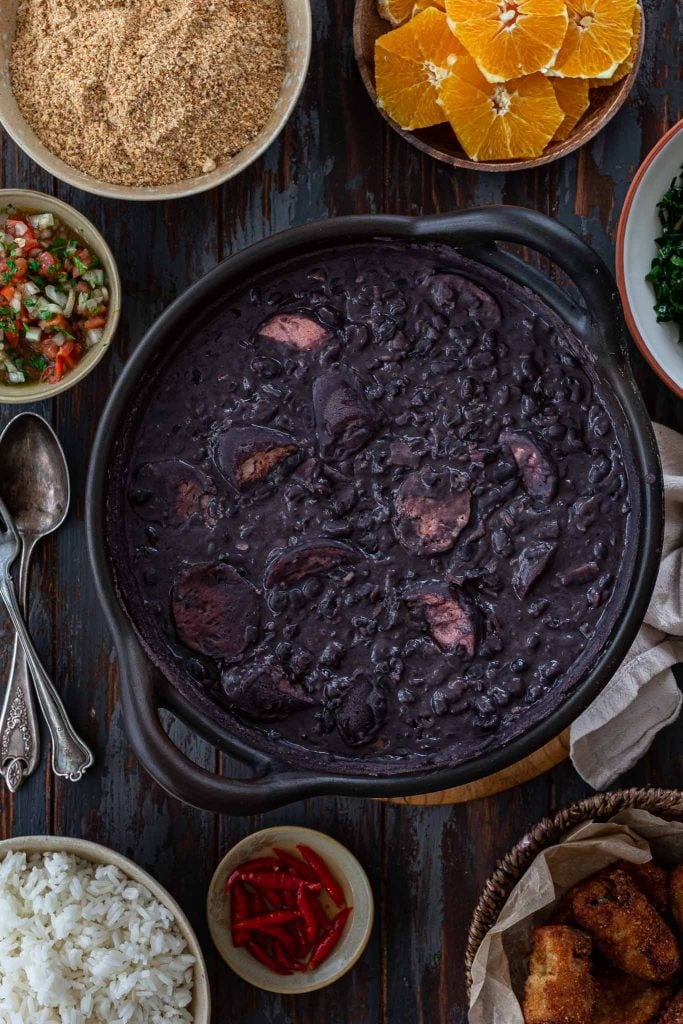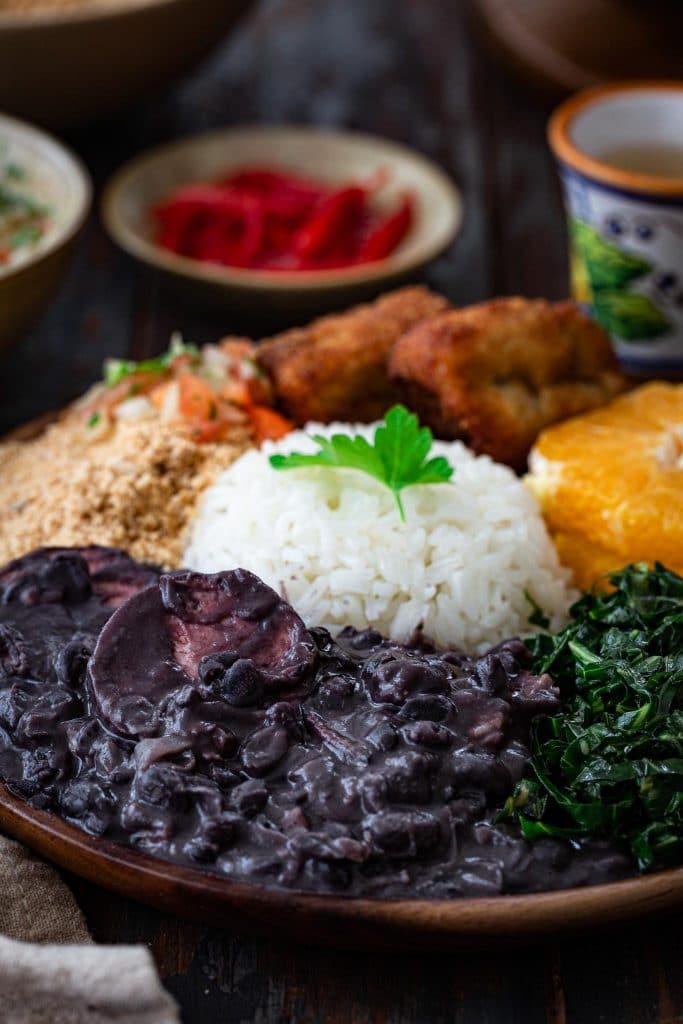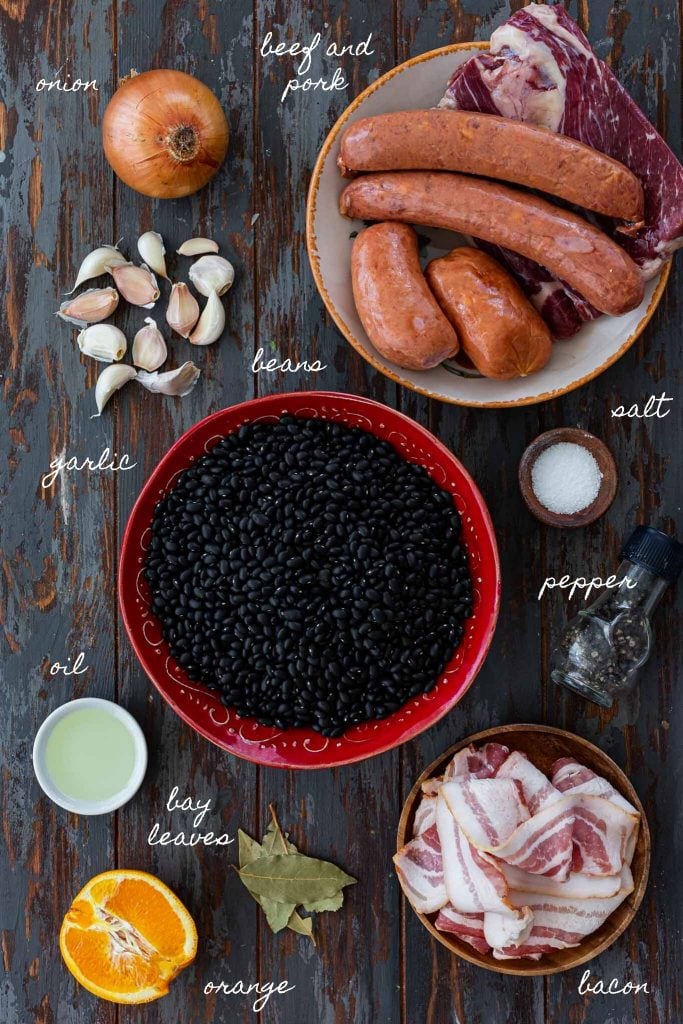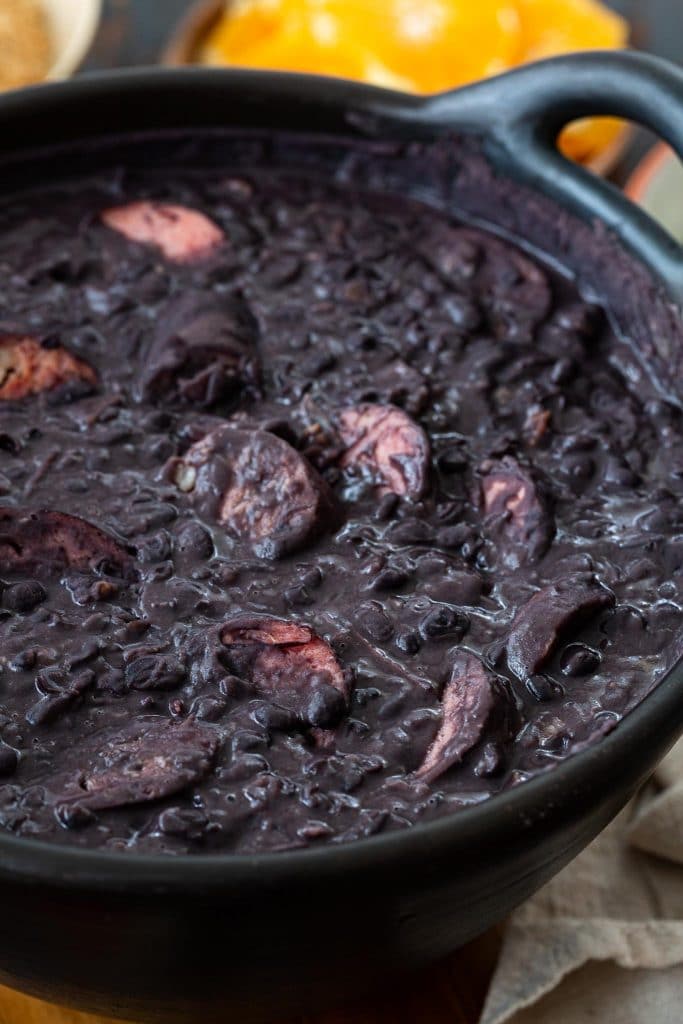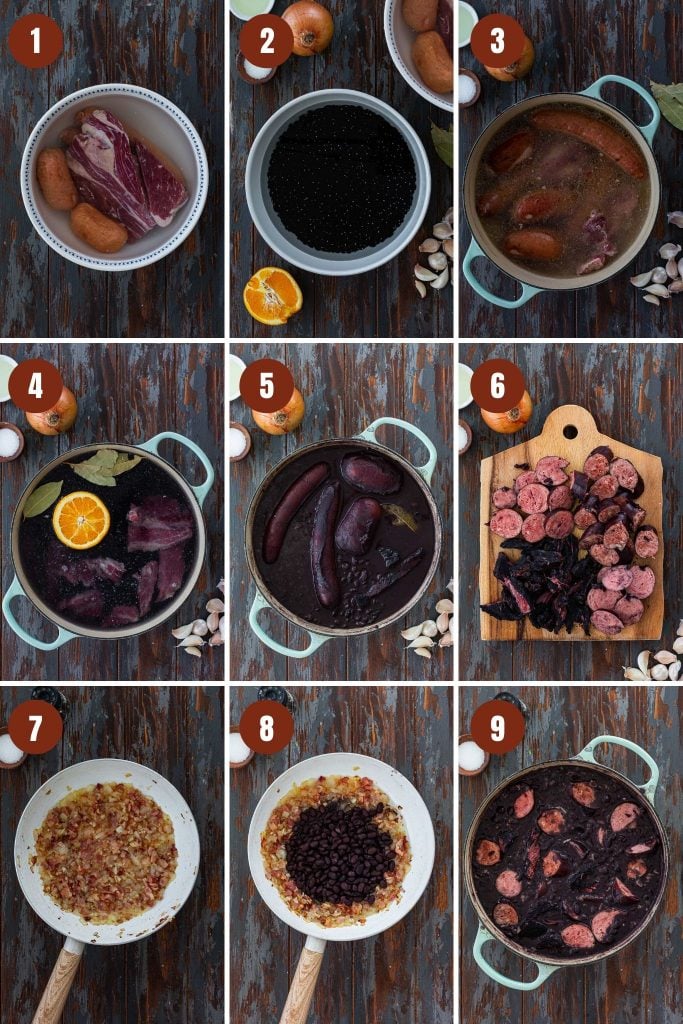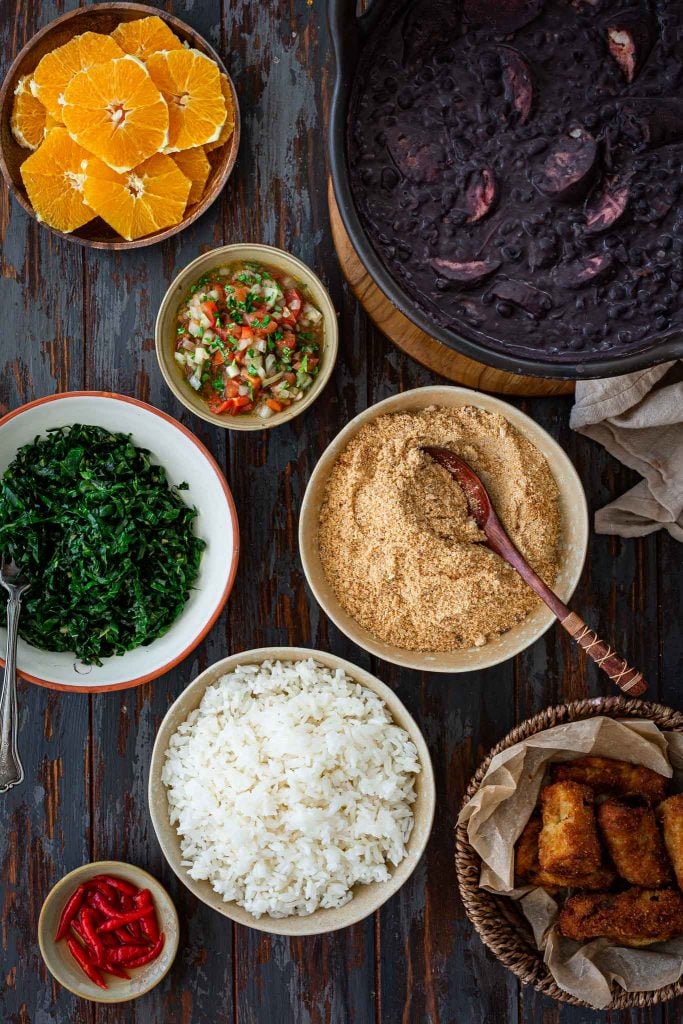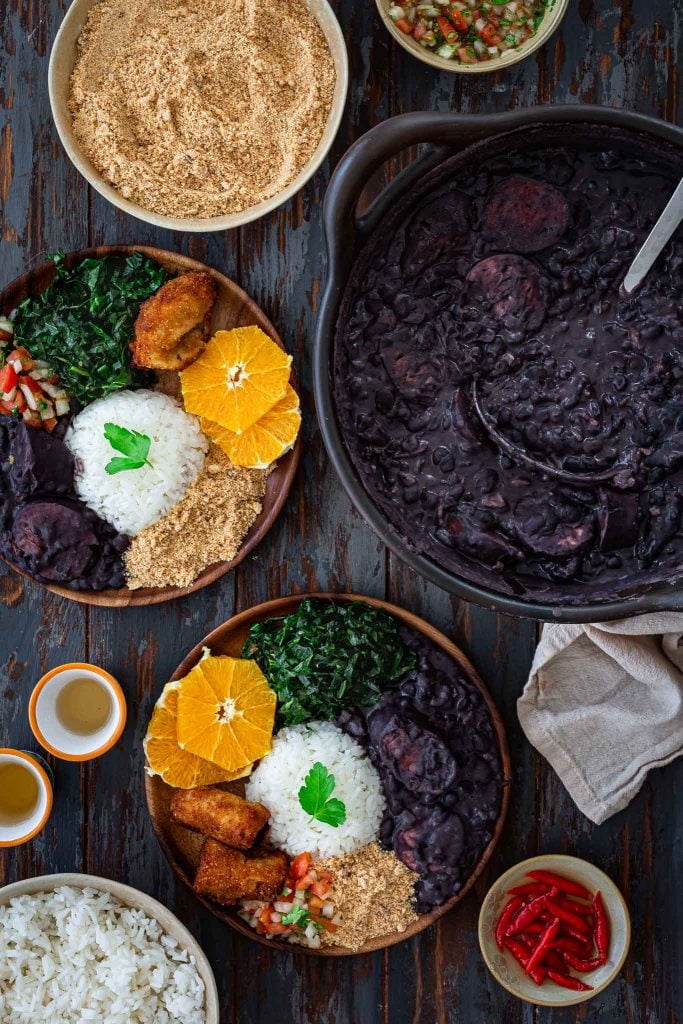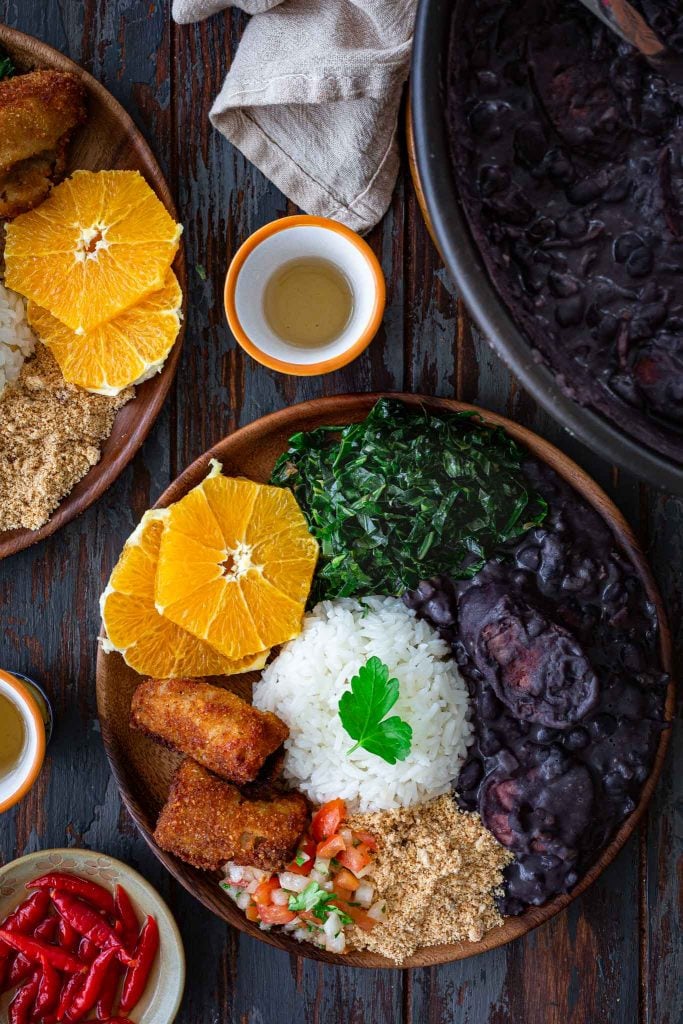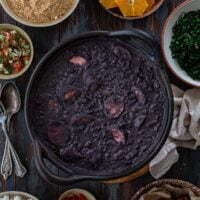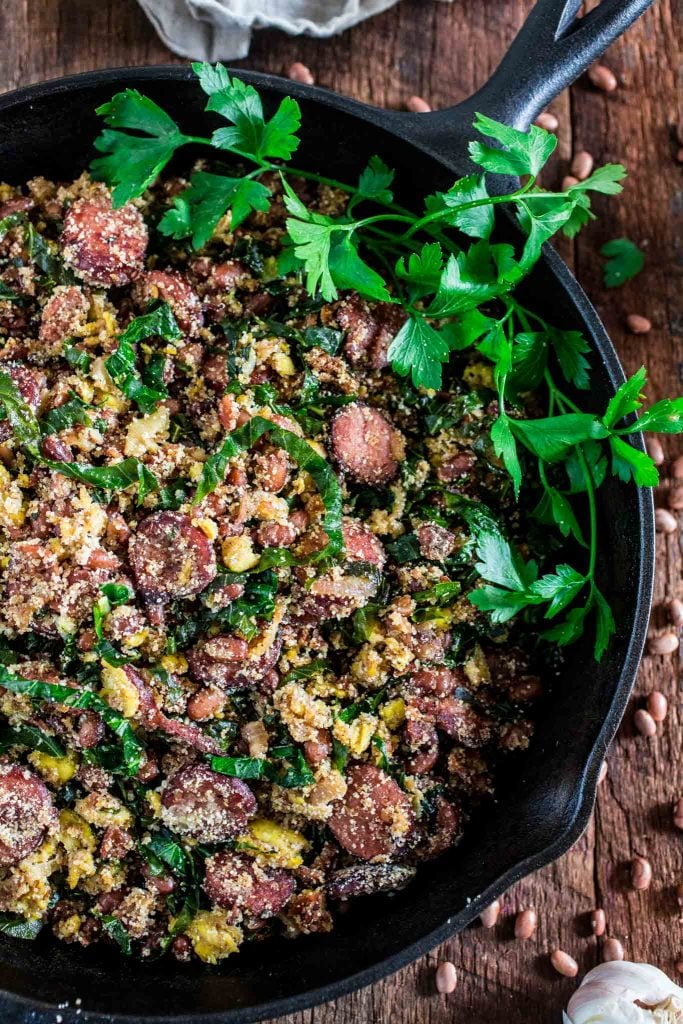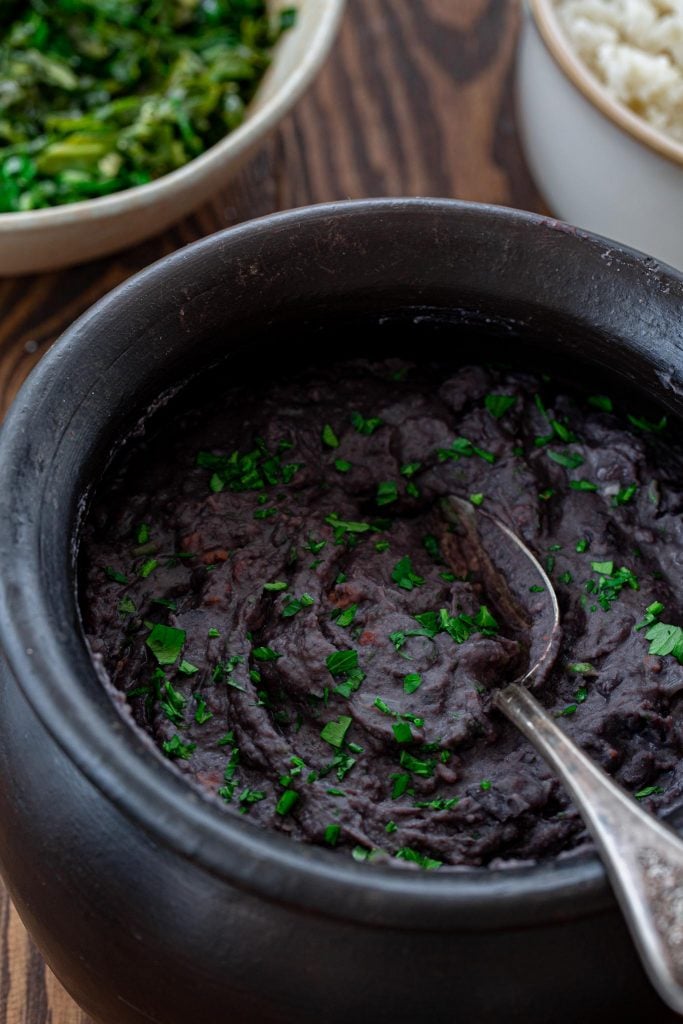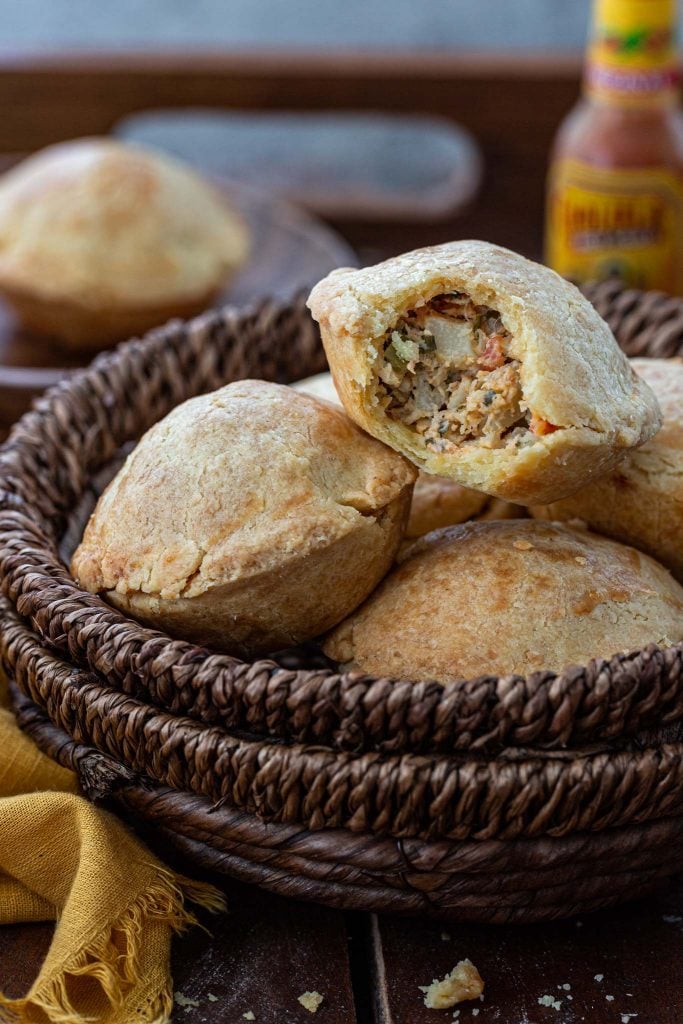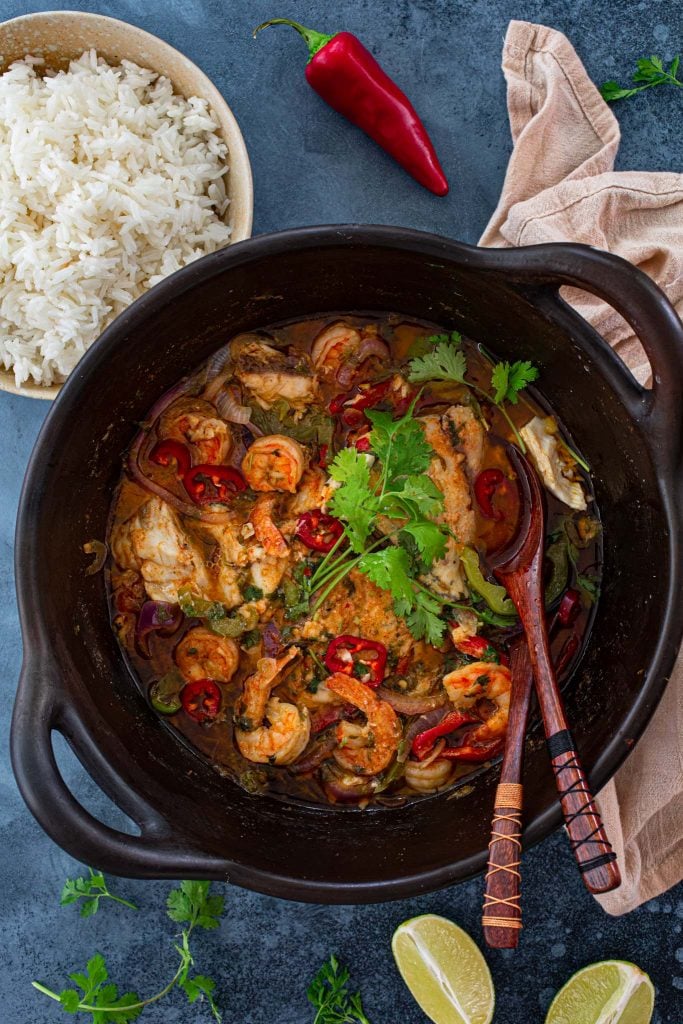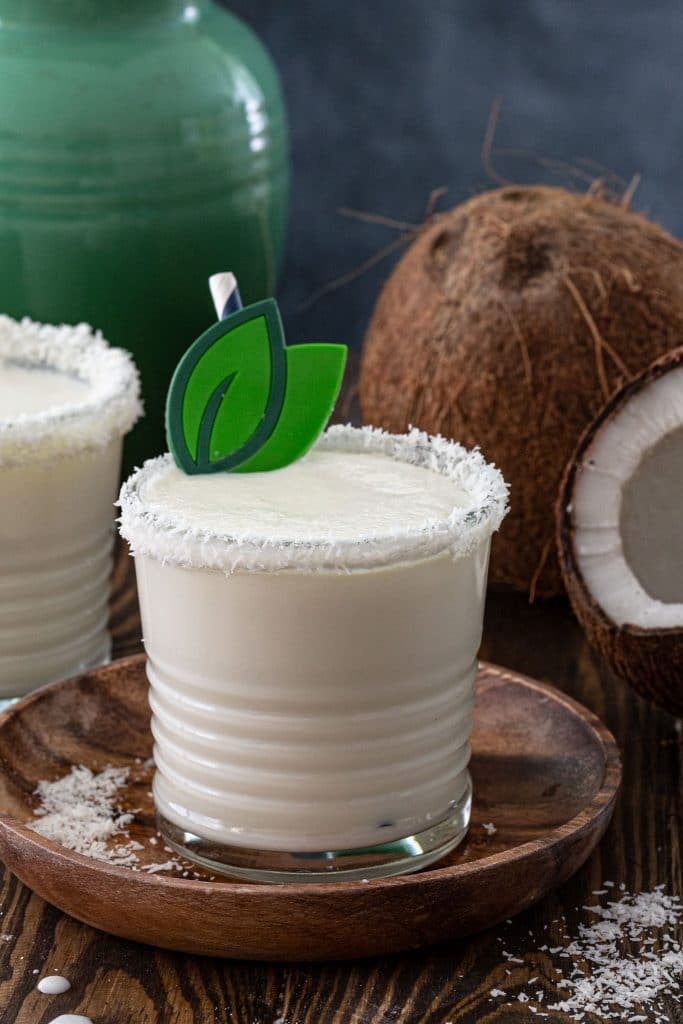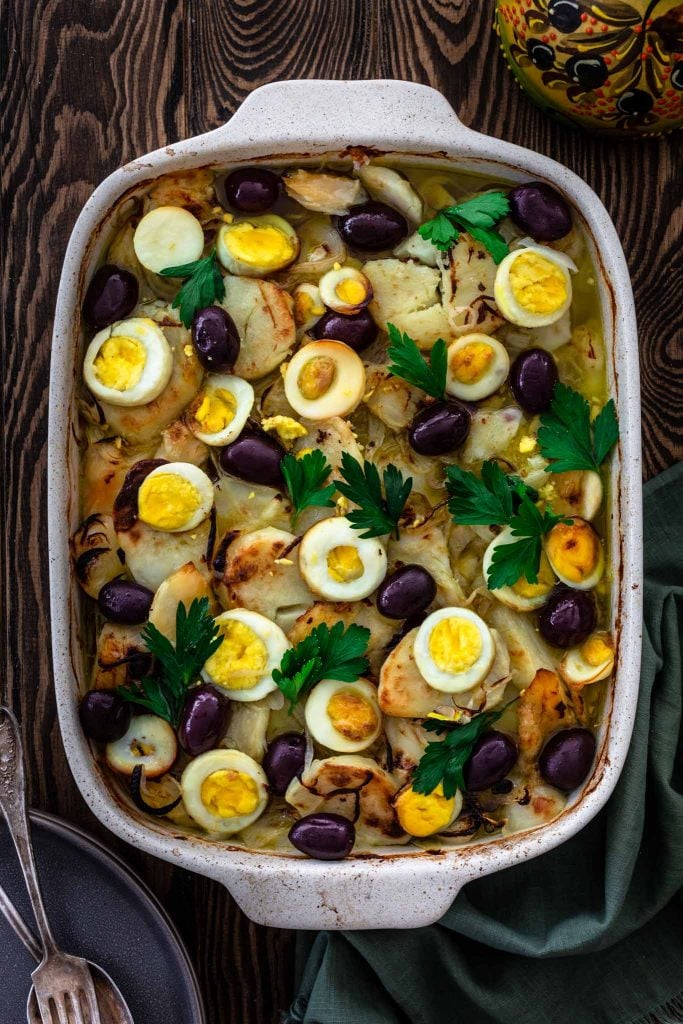Your feijoada party won’t be complete without a side of my Brazilian Collard Greens, my Brazilian Salsa and my Brazilian Rice, so make sure to grab those recipes as well.
A hearty black bean stew that will warm your soul!
I can’t tell you how many times I’ve gotten requests for a feijoada recipe here on the blog. And I can’t blame you! How could one pretend to be an expert in Brazilian cuisine and not have feijoada on her site? Pffft! Well, the truth is I’ve been making feijoada ever since I learned to cook, but I was procrastinating on sharing it here because I knew it would be a long post. Yes, this is a long tutorial. It will cover everything, from all the ingredients to the history of the dish and how to make it, the traditional way as well as in the Instant Pot and in the slow cooker. I considered sharing a recipe using ingredients you would likely find at your local store, wherever you are in the world. But, in the end, I decided to share it the authentic way! Or almost… as I don’t use pig feet, tail and other obscure types of the pork. That means that you will have to pay a visit to a Brazilian grocery store. If you live in a big metropolis, like New York City, this will be easy, as there are several places to choose from. However, if you don’t have access to one, and can’t find the ingredients online, don’t worry. I am providing recommendations for substitutions so you can make feijoada whenever you feel like it!
What is feijoada?
Feijoada, pronounced fay-jwah-dah, is considered Brazil’s national dish. The name comes from the word feijão, which means bean, an essential ingredient of the dish. Black beans, salted beef and pork come together in a hearty slow cooked stew, traditionally served with rice, collard greens and farofa (toasted manioc flour). As for its origins, the most believed theory says that feijoada was invented by Brazilian slaves, who created the stew by combining the scraps (including the pig’s feet, tail and ears) from their owners. Well, that theory has several flaws. First, back in those days, the pig’s head, tail and paws were considered delicacies and wouldn’t be discarded so easily by the slave owners. Also, since a good part of Africans were muslim, I can’t see how they would have created a stew with pork, which is prohibited in Islam. A more plausible argument says that feijoada is an adaptation of a Portuguese pork and vegetable stew from the Minho Province in the North of Portugal. In fact, stews were popular throughout all Europe. The 16th to 18th centuries were marked by food scarcity. There could be no waste, so dishes that could be made by cooking lots of cheap ingredients together were very common, like the French Cassoulet, the Spanish Cocido Madrileño and the Italian Fagiolata. Regardless of its origins, feijoada couldn’t be more Brazilian. It is enjoyed throughout the country and always a celebratory meal. It is a great reason to gather with friends for a feast!
Ingredients
You do not need a whole lot of ingredients to make a darn good feijoada. A few pantry staples combined with a few cuts of pork and beef come together to make the most delicious black bean stew you’ve ever tasted! BEANS – Feijoada is generally made with black beans, but you can certainly use other types of beans if you prefer. I recommend you skip those old beans that you have had in your pantry for the past 2 years, if you can. The older they get, the less evenly they cook. ONION AND GARLIC – The foundation of every savory Brazilian recipe! And yes, you do need all those 12 cloves of garlic to make a good feijoada. BACON – Slab or thick-cut bacon. SALTED BEEF AND PORK – More on that soon. ORANGE – Legend has it that adding an orange (no need to peel) to Brazilian black bean stew helps get rid of the excess fat. Now, I don’t like to taste orange in the final stew, so I add only half an orange and that seems to do the trick! OIL – Just a little vegetable or olive oil for sautéing the aromatics. BAY LEAVES – Bay leaves are a must in any of my bean recipes! They add a subtle, slightly herbal aroma that brings some freshness to the hearty beans. SALT AND PEPPER – If making feijoada with the traditional salted meats, you probably won’t need a lot of salt. Leave the seasoning to the end, so you can taste and add as needed.
Can I use canned beans?
A pot of black beans that has simmered for hours with fatty, salty meat is magical and the flavors and complexity cannot be quite replicated with beans from a can. However, if you’re in a pinch (and don’t mind compromising flavor), you can use rinsed canned beans at the rate of 1:3. Meaning 1 cup of dried beans should be substituted for 3 cups of cooked (canned) beans. I also wouldn’t cook the canned beans for as long as I would the dried beans. So start with only the meats and add the canned beans at the end, when the meats are tender but not yet ready, letting them simmer for 30 minutes to take on the flavor of the other ingredients.
Traditional feijoada meats and substitutions
Traditionally, feijoada is made with several parts of the pig, including the ears, tail, tongue, hock and feet. While you can certainly ask your butcher to give you these cuts, my version doesn’t use them due to my personal preference, as well as convenience. You will need to shop online or at a Brazilian grocery store to make my feijoada, but it is very worth it. However, I will include substitutions in case you prefer to make it with ingredients you can find at your local store! Here’s the meats you’ll need to make my recipe and some recommended substitutions: CARNE SECA (or carne de sol) – An air-dried, salted piece of beef, very popular in Brazilian cuisine. This is the hardest one to substitute, as nothing will taste quite the same, but you could use corned beef or boneless short ribs instead. SMOKED CALABRESA SAUSAGE – Also known as linguiça, this is a smoked cured pork sausage seasoned with garlic and paprika. If you can’t find it, use another smoked sausage, like kielbasa or andouille. PAIO SAUSAGE – Another traditional smoked Portuguese and Brazilian sausage, Paio is made of pork loin and seasoned with garlic, salt and Capsicum pepper. Substitute for smoked chorizo or another type of smoked sausage. BACON – Traditionally, hunks of slab bacon would be used. I use the thick-cut bacon that you can easily find at any supermarket.
How to make feijoada (Stove, Instant Pot and Slow Cooker)
Making feijoada is not difficult but requires some planning, as you will need to soak the salty meats and beans beforehand. I am including instructions for the stovetop method, as well as for the Instant Pot and the slow cooker. If using the stove method, using a clay pot is the traditional way to cook it, but a large Dutch Oven or a heavy bottomed pot will work just as well! Be aware that if you’re substituting the beef and/or pork, cooking times will vary. Recommended tools: Clay pot or Dutch Oven, skillet, Chef’s knife, cutting board. Here’s how I make this feijoada recipe. As always, you will find the printable (and more complete) version of the recipe at the end of this post!
Step 1: Soak the meat and beans.
1 day before cooking the black bean stew, soak the carne seca and sausages in cold water. Cover in plastic and put in the fridge for 24 hours, changing the water at least 3 times. (Photo 1)Soak the beans overnight in cold water. (Photo 2)
Step 2: Boil the meat for 20 minutes.
Place the meat in a large pot and cover with cold water. Bring to a boil and let them cook for 20 minutes. That helps get rid of excess salt. This step is not needed if substituting the traditional salted meats. (Photo 3)
Step 3: Cook the beans and meat.
Combine the beans, orange, bay leaves, carne seca and water in the pot. Simmer for 30 minutes. (Photo 4) Add the sausages and continue simmering until the meat is tender and the beans are cooked. Remove the orange and discard. (Photo 5) Slice the beef and sausage into bite sized chunks. Reserve. (Photo 6)
Step 4: Sauté the bacon and aromatics
Sauté the bacon in a skillet. Add the onion and garlic, and sauté until softened. (Photo 7)Pour a ladleful of beans (without liquid) and use a fork to mash them to release the starch. (Photo 8)
Step 5: Thicken the stew
Add the mashed bean mixture to the stew pot and boil until the stew thickens. Taste and season with salt and pepper as needed. Then, add the meat back, remove bay leaves and serve. (Photo 9)
Making Feijoada in the Instant Pot
Making Feijoada in the Slow Cooker
Do I really need to soak the meat and beans overnight?
If using the traditional feijoada meats, yes, you need to soak them in cold water for 24 hours and change the water a few times to get rid of the excess salt. If you’re substituting for American ingredients, you can skip that step. As for the beans, soaking overnight is optional. The idea is that soaked beans will cook faster and that soaking will help break down some of the complex sugars, making them easier to digest. That being said, if you didn’t soak your beans, it is a-okay! They will take a little longer to cook, but they will get there.
What do you serve with Feijoada?
If you’re looking for the perfect feijoada experience, there are a few sides that must be served with it.
White Rice – And forget old boring boiled rice. You must make it the Brazilian way! Farofa – Toasted manioc flour. Brazilian Vinaigrette Salsa Sautéed Collard Greens Fried Bananas Orange Slices – Supposedly, eating oranges with feijoada helps with digestion. Hot Sauce or Pickled Chili Peppers
To drink, caipirinhas or shots of cachaça will take you straight to Brazil! Just be careful because, if you’re anything like my husband, cachaça can make you forget all about that meal.
Help! My feijoada is too salty!
That happens if you don’t soak the salty meats for 24 hours, changing the water at least 3 times. But, don’t worry, there is a trick that can help you! If you notice your stew is too salty, add two or three peeled potatoes and let them cook with the feijoada for 10-15 minutes. No more than that, or they will release a lot of starch in the stew. The theory is that the potatoes will absorb the extra salt from the stew, but that’s not what happens. The potatoes will absorb liquid, and in this case, the liquid is salty, so that helps with the overall salt content of the dish. You will have to add more water so your beans are not too thick and that also helps dilute the saltiness. Unfortunately, that means that some of the flavor that took hours to develop will also be gone. In the future, remember to soak the salted meat and hold on seasoning the feijoada until the very end!
Can I make black bean stew ahead of time?
Yes! In fact, feijoada tastes even better the next day, after a night in the fridge. When ready to serve, place it back in a large pot and reheat, over medium low heat, adding more water if necessary to bring it back to the original consistency.
Can I freeze it?
Also, yes, this black bean stew freezes really well. It will keep in an airtight container or freezer bag, in the freezer, for up to 3 months. You can thaw overnight in the fridge or add straight from the freezer to a pot and reheat over low heat, adding more water as needed. Did you make this recipe? I love hearing from you! Please comment and leave a 5-star rating below. You can also take a photo and tag me on Instagram with #oliviascuisine.
Love Brazilian Cuisine? You might also like:

